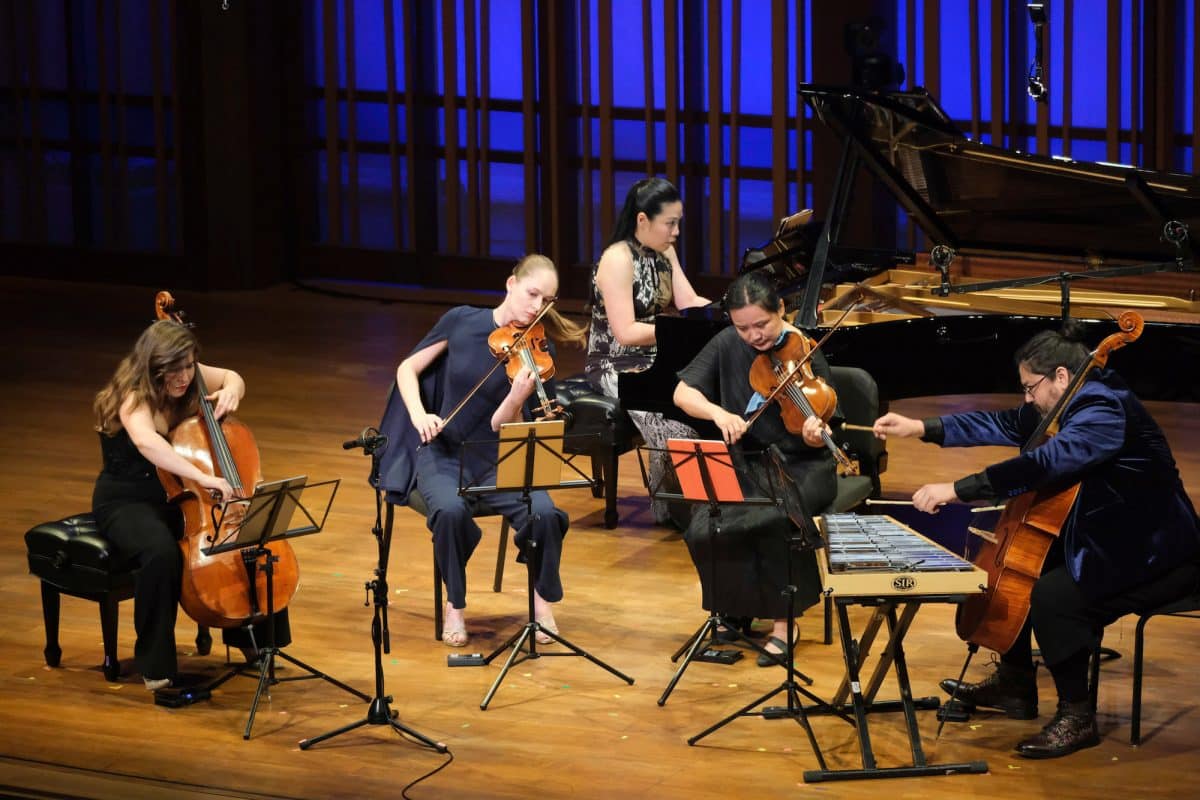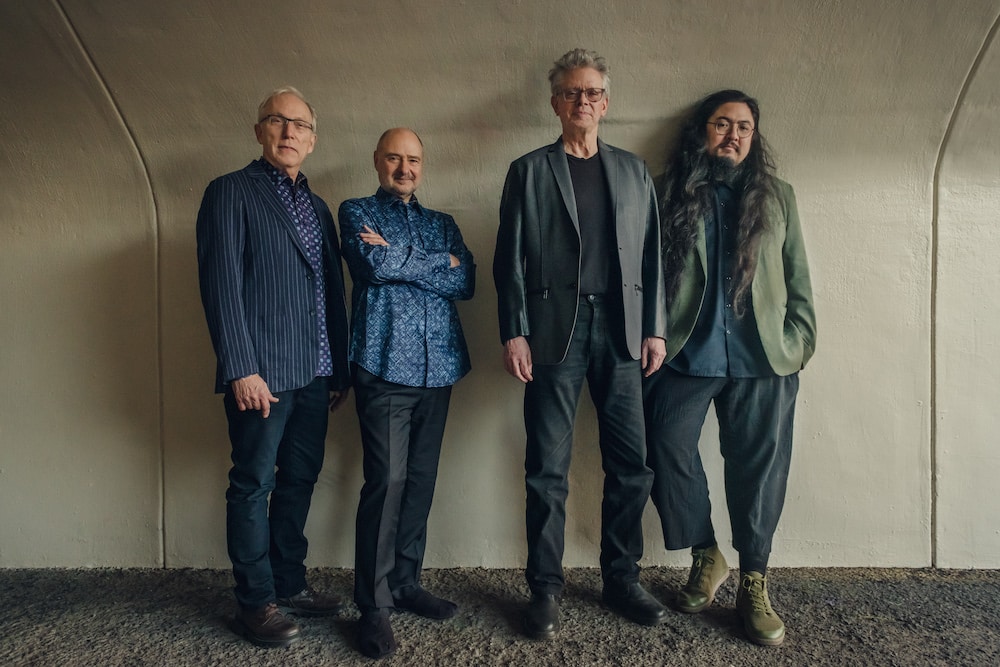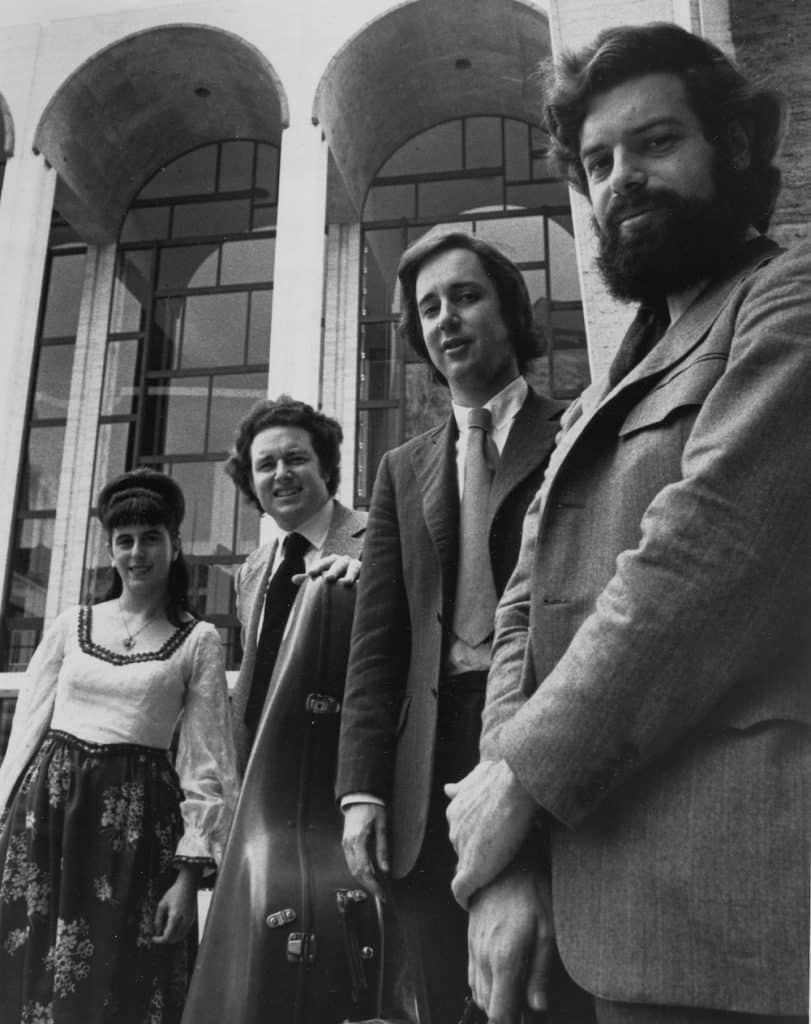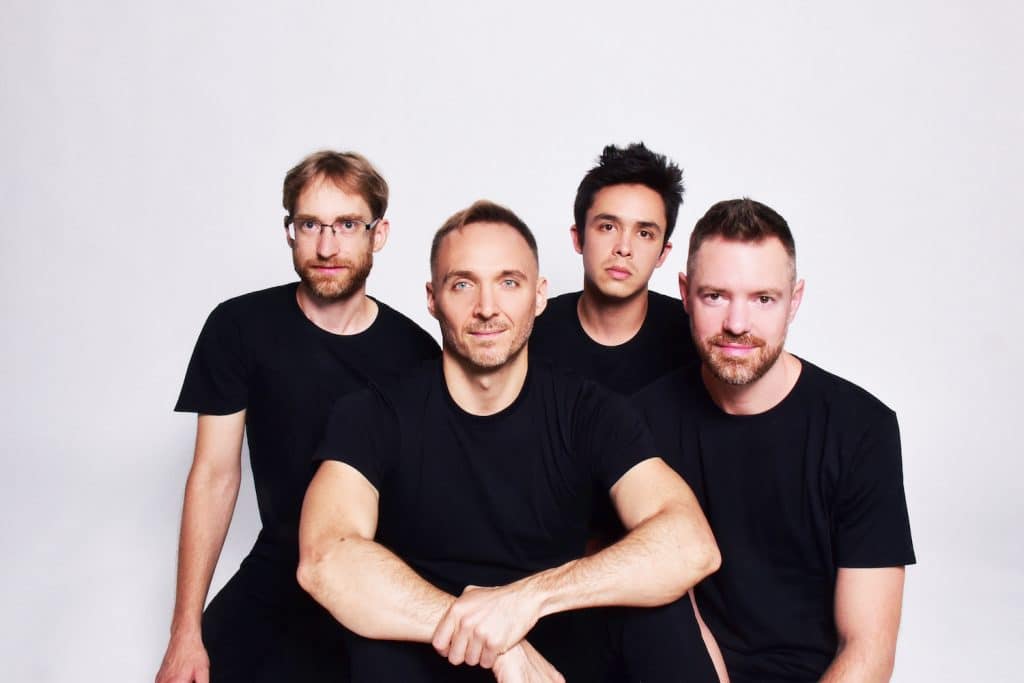Drop Everything, Embrace Change
A cellist and composer reflects on his personal road to two remarkable opportunities, and the view they afford.
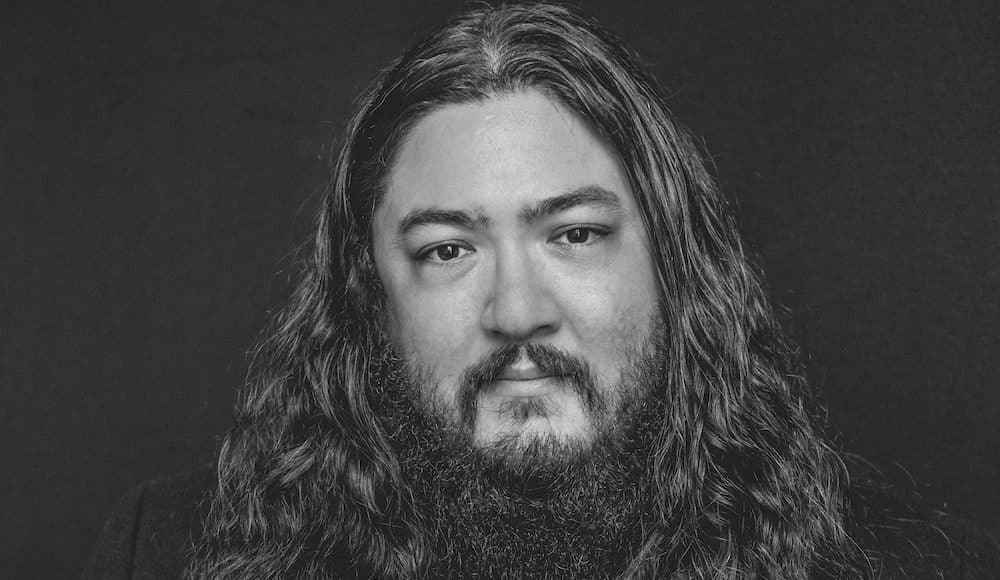
My father Gene used to tell me that the average person changes careers seven times. In his own lifetime, he enjoyed successful stints in engineering, cartography, and geophysics, before ending up in documentary filmmaking. At first, I interpreted this oft-mentioned fact as a subtle way of informing an unruly young music student that a life in music would be tough, and that I might want to pursue something more pragmatic. But in recent years, as my artistic priorities have twisted into new configurations, I have begun to understand what he meant. Life is short. Embrace change. I’m not up to seven yet, but my path within music has branched off in so many directions that I wonder how I haven’t ended up back where I started.
My disinclination to stay in one lane started young. At age five, I was just as concerned with improvising and creating sound effects on my cello as with zipping through the prescribed Suzuki repertoire. By 13, in addition to my favorite recordings of the Schubert “Cello Quintet” and anything Shostakovich, I had devoured the music of Pink Floyd, Public Enemy, Joni Mitchell, Miles Davis, Fugazi, and the Bulgarian State Television Female Vocal Choir. These artists permanently altered my musical worldview. The following summer, at a music camp, I had my first revelatory chamber music experience while working on Mozart’s “The Hunt” String Quartet. It had never occurred to me that it was possible to communicate so deeply with three other people before actually getting to know them.
In high school, I saved up for an old Fostex four-track and recorded countless lo-fi, cello-centric adaptations of my favorite tunes—everything from Neil Young’s “Old Man” and Nirvana’s “Smells Like Teen Spirit” to Bach chorales and Albéniz’s “Asturias.” Later, while studying cello performance at USC, I joined my first “indie-alternative” band. I developed a reputation among local producers for on-the-fly string arranging, and crammed in recording sessions with local punk bands between cello lessons and orchestra rehearsals. While pursuing a graduate diploma at The Colburn Conservatory of Music, I taught myself Pro Tools and some basic audio engineering techniques under the guise of helping other students make audition tapes—a skillset that allowed me to start creating my own electronic music and to collaborate remotely with artists and producers around the country.
Meanwhile, I immersed myself in the worlds of Ligeti, Dutilleux, Saariaho, and Lutoslawski in preparation for several international cello competitions. As I began to fall head-over-heels for Lutoslawski’s Cello Concerto, it finally dawned on me: classical music isn’t just a series of snapshots to be studied and recreated. It is, and has always been, a living and breathing art form in a constant state of evolution. An evolution I was already participating in.
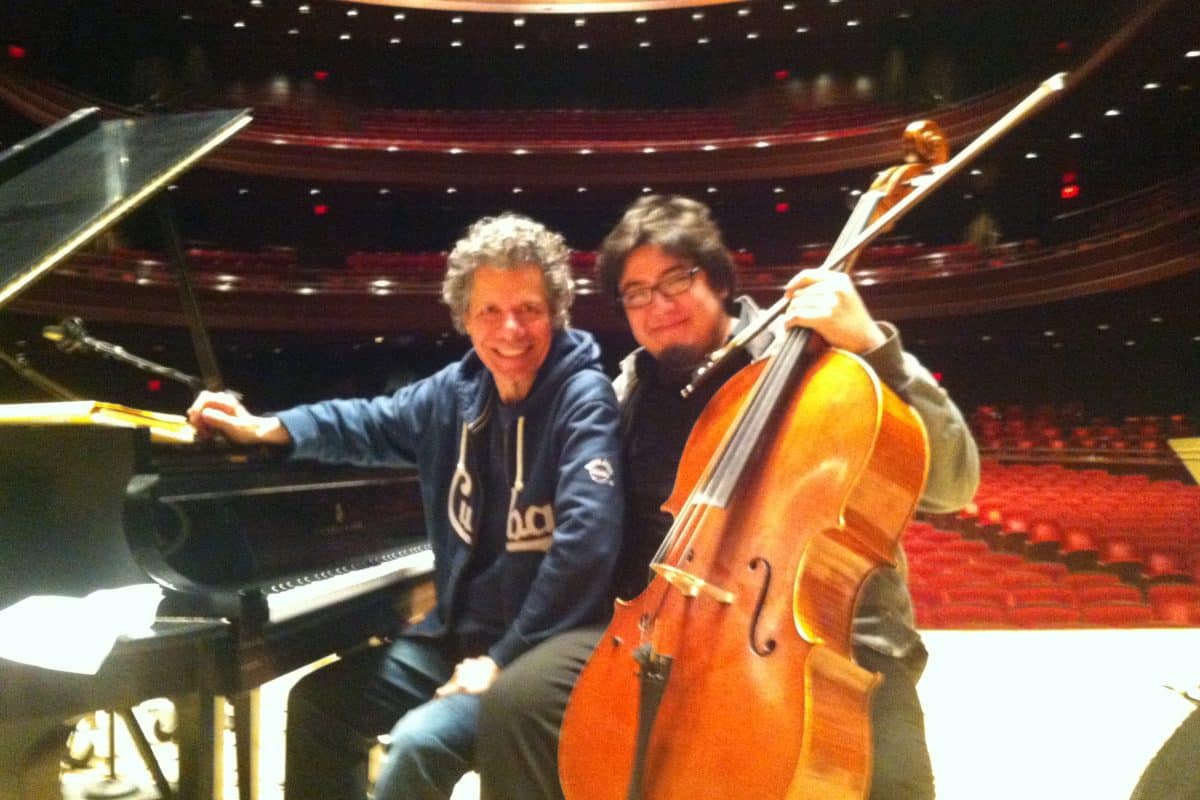
I spent the next three summers delving into Haydn quartets and Schumann piano trios at the Marlboro Music Festival— experiences that re-centered chamber music at the core of my musical belief system. But it wasn’t until joining the
Harlem Quartet around that same time that my passions began to collide in earnest. As we uncovered more and more common ground between the music of Beethoven, Marsalis, and León, my psychological barriers between composition, improvisation, and performance began to erode. Touring with pianist Chick Corea in 2011 only accelerated that erosion. Our most memorable conversations on the road also provided the most insight into the sparks for his music-making. The improvisatory nature of Mozart. The freewheeling genius of Bartók. The weightless autonomy of Art Tatum’s left hand. After learning what made Chick tick, I never heard music the same way—everything was more connected than I could imagine.
Chick Corea also inspired my most significant musical lane change. During the first set of a transformative weeklong run at Manhattan’s Blue Note jazz club, Chick gave me the sign to continue soloing on “’Round Midnight” for another chorus—an indication that things were either going well or that the solo needed more time to reach its full potential. Each day, he challenged me to take longer and riskier solos, but halfway through the week, I hit what felt like the limit of my abilities. I asked Chick for some pointers, and the conversation turned to the things that made me tick. I gave him more-or-less the same rundown that I’ve chronicled here. Without hesitation, he suggested that I draw from all of it, not just the “jazz part,” as inspiration. “It sounds like maybe you’re playing what you think you oughta play,” he told me. “Don’t think too hard. Just be who you are.” Chick’s encouragement, and the terrifying exhilaration of the performances that followed, unlocked something in me, including the confidence to drop everything and give composing a real shot.
The next decade was a blur of collabo- ration, composition, and self-discovery. With a feeling that I can only describe as being shaken awake from a fever dream only to realize you’re still dreaming, I now find myself as cellist of the Kronos Quartet and director of chamber music at Spoleto Festival USA. Seriously, though— talk about letting the kids have the run of the place. Both roles are accompanied by rich legacies of innovation and extraordinary musicianship, and as someone inescapably drawn to places where the traditional and the cutting- edge collide, it is an honor to bring the most complete version of my musical self to both.
As my dreams for the future of chamber music at Spoleto become actionable plans, I can’t help but feel deeply moved to get to build upon the legacy of my close friend and predecessor, the late Geoff Nuttall, and to get to share my love of chamber music and everything I believe chamber music can be. A salve in difficult times. A platform for the greatest artists and composers of our time to share their stories. A bridge between strangers, cultures, and ideologies. A pathway to tolerance. A celebration of humanity’s most beautiful achievements over the centuries, and—for those brave enough
to look—a reflection of our weaknesses.
Chamber music is like no other art form. Its repertoire grows more imaginative, relevant, and inclusive by the day, and its performance requires not only exceptional communication, but elevated levels of awareness, empathy, boldness, and vulnerability—the very traits that have the potential to heal our ailing world. Chamber music requires an understanding of our past in order for new doors to open. The fact that I now have a chance to help shape the future of the thing that has shaped my life is still mind-boggling to me. As I look back at the path that brought me here and realize that I am a product of its detours, I feel readier than ever to embrace the road ahead, and together, lean into its twists and turns with open ears.
